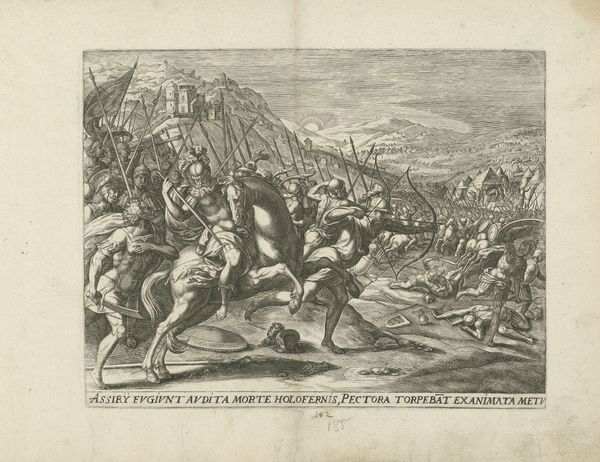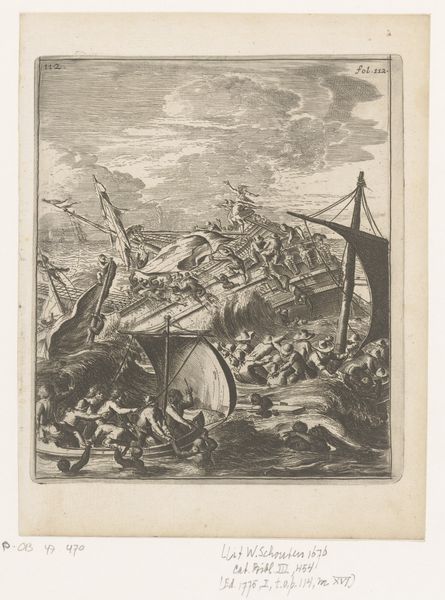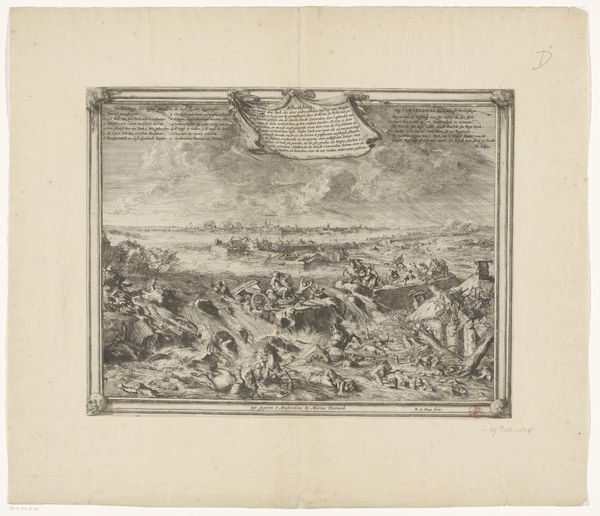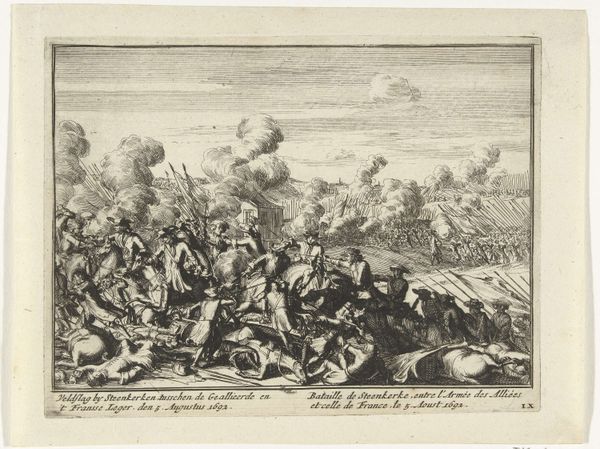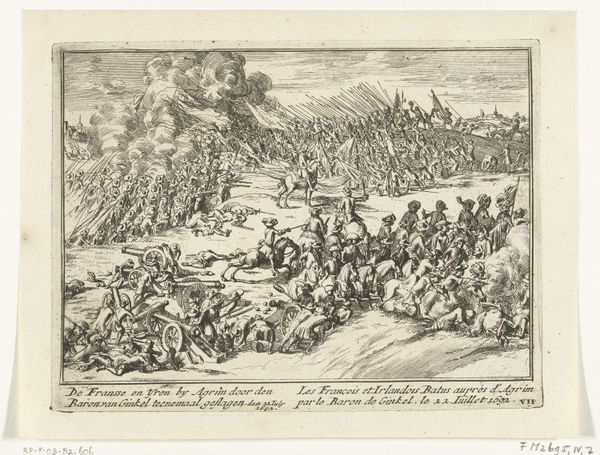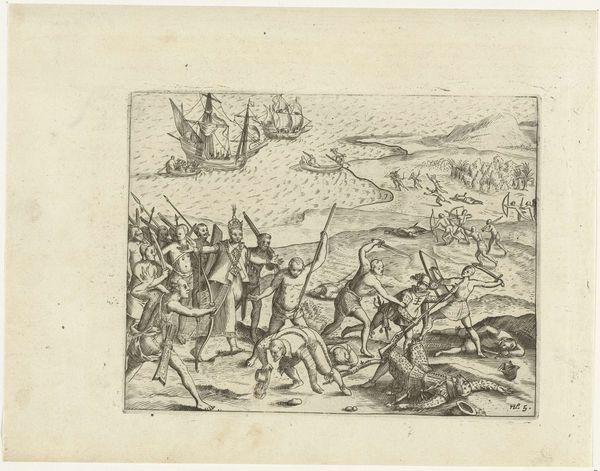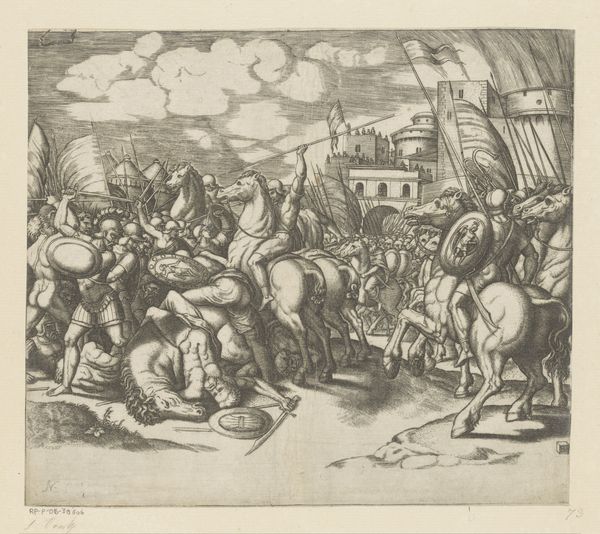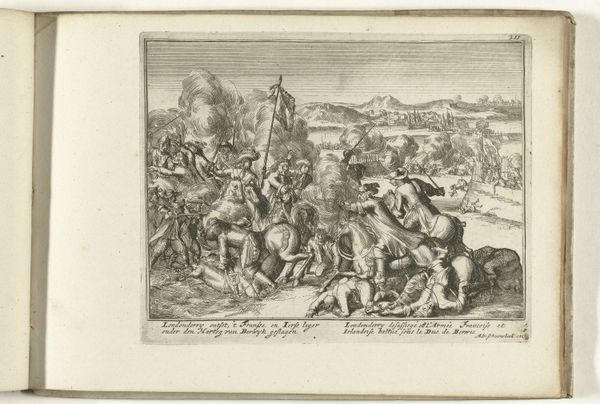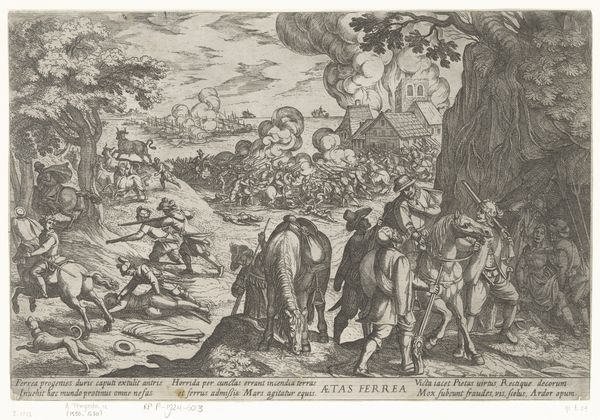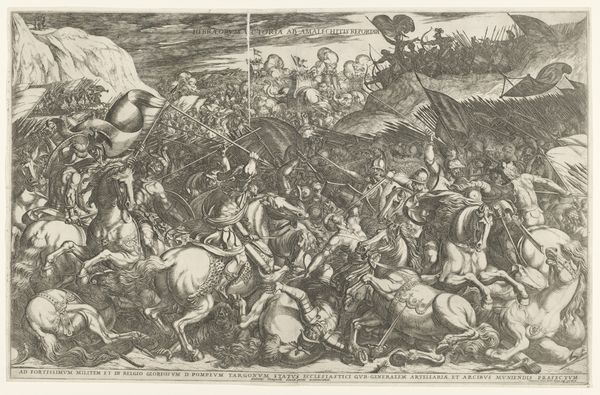
#
pencil drawn
#
aged paper
#
toned paper
#
light pencil work
#
pencil sketch
#
old engraving style
#
personal sketchbook
#
sketchbook drawing
#
pencil work
#
sketchbook art
Dimensions: height 107 mm, width 141 mm
Copyright: Rijks Museum: Open Domain
Curator: Looking at this, my first impression is of swirling chaos – a dance of death, really. Editor: I agree. It's evocative, almost feverish. This is Johann Wilhelm Baur’s "Moren in een veldslag", dating to 1633. We currently have it on display here at the Rijksmuseum. Curator: Given its title, can we contextualize this "battle against the Moors" within the wider context of 17th-century European perceptions and conflicts with North Africa and the Islamic world? The composition itself seems rife with power dynamics, and considering that time, were these narratives used to legitimize colonial expansion? Editor: Precisely. And artistically, notice how Baur utilizes an economy of line – delicate yet effective – to convey the density of bodies and weaponry. Think of the implications held within a horse and rider as the main actor of the scene! The rearing stance is repeated. Can we analyze how the image builds meaning around equestrian dominance? Curator: The horse motif is compelling here, symbolizing not only power, but perhaps also the exoticism and the perceived ‘otherness’ that Europeans associated with the Moorish world. It reminds me how potent visual tropes were used and how they impacted contemporary public understanding. The flags could reveal a political discourse of its time. Editor: Right. Note how figures are obscured, becoming mere suggestions of human form. Could this blurring speak to a broader dehumanization inherent in warfare and ideological clashes? Curator: Absolutely, it's a strategic abstraction. By obscuring individual faces, he universalizes the experience, while paradoxically reinforcing the biased view. What survives is an overall image of tumult where moral particularity dissolves in the conflict. It definitely forces me to consider Europe’s historical perspective on religious conflicts. Editor: Indeed. It’s quite impressive how Baur creates this sweeping sense of action. Each of his individual drawings suggests a wider story – he evokes the clash and the human suffering. Curator: Well, viewing this artwork with an understanding of history and sociopolitical themes reveals Baur's image not simply as a depiction of conflict, but also as a cultural document which perpetuates and challenges biased viewpoints. Editor: A lasting illustration for understanding cultural symbols in conflict.
Comments
No comments
Be the first to comment and join the conversation on the ultimate creative platform.
